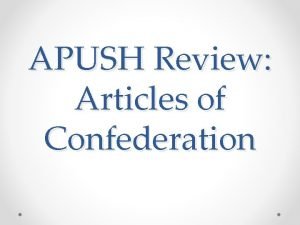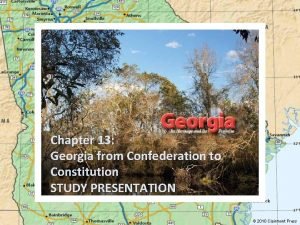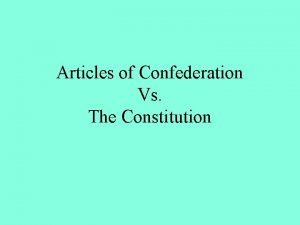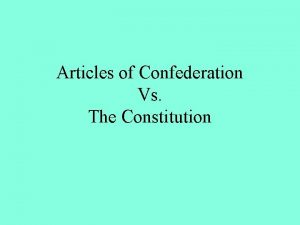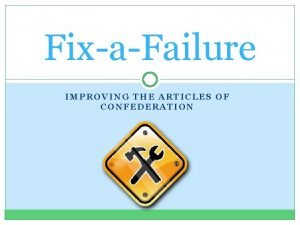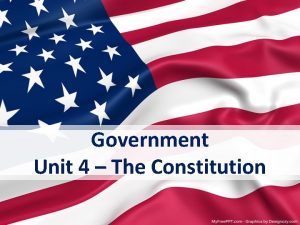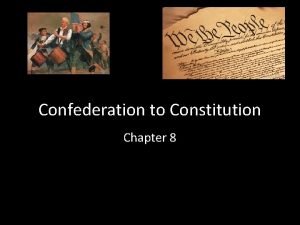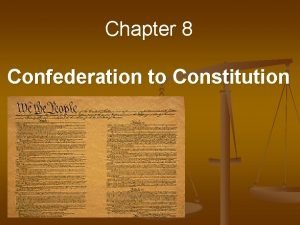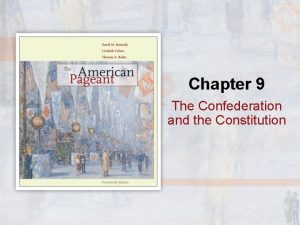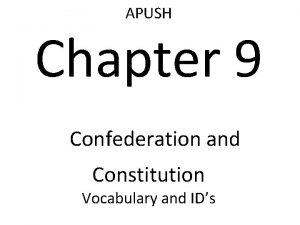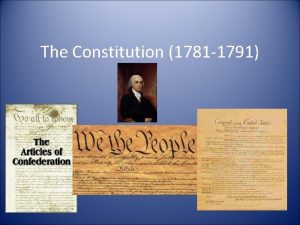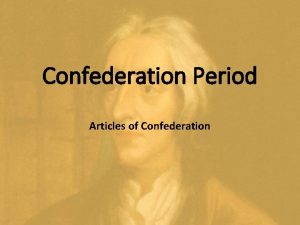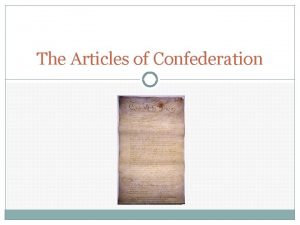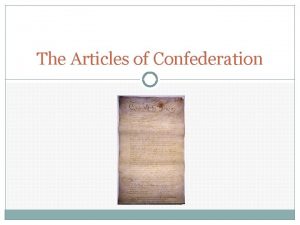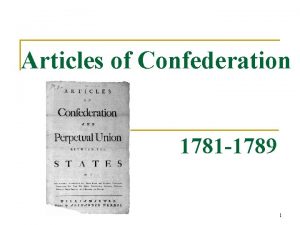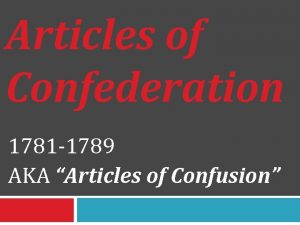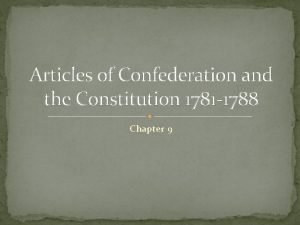The Articles of Confederation Americas first Constitution 1781









- Slides: 9

The Articles of Confederation America’s first Constitution 1781 -1789

Basic Facts • America's first Constitution • Ratified in 1781: would last until 1789 • Created a weak national government in which the individual states retain most of the power (confederation of states) • Considered to be the "critical period" in US History • Back-lash from the Monarchy rule of King George III

Government Structure • Created a Unicameral Congress (Legislative Branch) • No Executive: Congress would choose a president but he had no authority or power • No Judicial Branch

Powers of the Congress • • Unicameral (one house) one vote per state Could make war and peace Could send and receive ambassadors Could borrow money on the credit of the US Could establish a national monetary system Could establish a post office for mail Could raise a Army and Navy Could pass (make) laws: 9 votes out of 13 required

How did the A. of C. deal with Western lands? • Northwest Ordinance of 1787 – Law passed by Congress to deal with western lands – Outlaws slavery in this region – Provides a system for territories to become states – Considered the most important success of the A. of C.

Weaknesses of the Articles of Confederation • Congress did not have the power to tax (only to borrow money or request money from the states) • Congress could not regulate foreign trade or interstate commerce • One vote per state in Congress regardless of size • 9/13 majority required to pass laws in Congress • Required unanimous consent by all 13 states to amend the Articles of Confederation

Weaknesses of the Articles of Confederation (cont) • No strong executive (President) to make the states obey the laws that were made by Congress • No national judiciary (courts) to settle disputes among the states • Congress could only raise an Army or Navy by asking states to donate troops • Every state had the authority to print and coin its own money as well as the US Congress

Why didn’t the A. of C. succeed? • Because the national government was weak – No army, no way to collect taxes, no court system, etc • Because the states didn’t get along – Created their own money, taxed people from other states • 1786—Shay’s Rebellion – Revolt of farmers against high taxes in Massachusetts – National government could not help Massachusetts stop the revolt – Revolt fails, but it convinces many Americans that they need a stronger federal government – 1787—States meet in Philadelphia to create a new government (U. S. Constitution)

Summary • People fearful of a strong national government (King George III) • National government was too weak to solve the problems of the states or to enforce laws
 Newburgh conspiracy apush
Newburgh conspiracy apush Articles of confederation vs constitution
Articles of confederation vs constitution Articles of confederation vs constitution chart
Articles of confederation vs constitution chart Constitution vs articles of confederation
Constitution vs articles of confederation Problems of the articles of confederation
Problems of the articles of confederation Articles of confederation vs constitution
Articles of confederation vs constitution Chapter 8 confederation to constitution
Chapter 8 confederation to constitution Chapter 8 confederation to constitution
Chapter 8 confederation to constitution Chapter 9 the confederation and the constitution
Chapter 9 the confederation and the constitution Chapter 9 confederation and constitution
Chapter 9 confederation and constitution
